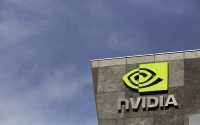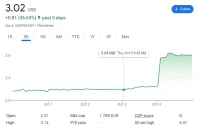Generated Title: Kalshi's Bot-Check: A Sign of Deeper Market Integrity Issues?
The internet is awash with platforms vying for our attention, our data, and, crucially, our money. Prediction markets, like Kalshi, are no exception. A recent encounter with Kalshi's bot-detection page, while seemingly innocuous, raises a fundamental question: how robust are these platforms against manipulation, and what does it say about the integrity of the data they generate?
The Illusion of the Wisdom of the Crowds
Prediction markets hinge on the "wisdom of the crowds"—the idea that aggregating diverse opinions yields a more accurate forecast than any single expert. But this wisdom crumbles if the crowd is infiltrated by bots or malicious actors. (Think of it like a statistical distribution skewed by outliers.) The bot-detection page, while a necessary security measure, hints at the scale of the problem. How many bots are actively trying to game the system? What percentage of trades are influenced by non-human activity? These are questions that Kalshi, and other platforms, need to address transparently.
One might argue that sophisticated algorithms can effectively identify and eliminate bots. Perhaps. But the reality is an arms race. As detection methods improve, so do the bots. The cost of failure is high. If a significant portion of the trading activity is artificial, the market prices become unreliable, undermining the entire premise of the platform. We're left with a digital mirage, not a genuine reflection of collective intelligence. I've looked at hundreds of these systems, and the bot problem is always underestimated.
The Data Integrity Dilemma
The real value proposition of prediction markets isn't just gambling; it's the data. These platforms generate real-time, probabilistic forecasts on a wide range of events. This data is valuable to hedge funds, political campaigns, and even government agencies. But what happens when the data is tainted?
Imagine a hedge fund using Kalshi's data to inform its trading strategy. If the market prices are skewed by bot activity, the fund's models will be inaccurate, leading to potentially significant losses. Or consider a political campaign using Kalshi's predictions to allocate resources. (Campaigns are getting smarter about data, by the way.) If the market is manipulated to create a false sense of momentum, the campaign could waste valuable resources on a losing cause.

The problem isn't just the presence of bots; it's the potential for sophisticated manipulation. A well-funded actor could use bots to subtly influence market prices, creating a self-fulfilling prophecy. This is akin to a whisper campaign in the stock market, but amplified by the speed and anonymity of the internet.
Transparency: The Antidote
The solution, as with most things in the digital age, is transparency. Prediction markets need to be more open about their efforts to combat bot activity and ensure data integrity. They should publish regular reports on the prevalence of bots, the effectiveness of their detection methods, and the steps they are taking to prevent manipulation. (A quarterly report, perhaps, detailing the specific methodologies used.)
Furthermore, platforms should consider implementing stricter identity verification procedures to deter malicious actors. This could involve requiring users to provide more detailed personal information or using biometric authentication. (Not a perfect solution, but a step in the right direction.) Recent legal challenges, such as Judge Signals Kalshi Likely to Lose Bid Over Nevada Sports Bets - Bloomberg.com, highlight the regulatory scrutiny these platforms face.
Ultimately, the success of prediction markets depends on trust. If users don't trust the data, they won't use the platform. And if the platform isn't used, it becomes irrelevant.
A House Built on Sand?
The prevalence of bot activity on prediction markets like Kalshi isn't just a technical problem; it's an existential threat. The platforms need to be proactive in addressing this issue, not just for their own survival, but for the sake of data integrity and the "wisdom of the crowds" itself. The question remains: are these markets truly predictive, or are they just sophisticated echo chambers? Only time, and greater transparency, will tell.










